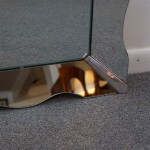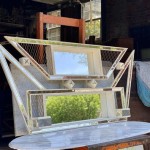How To Screen Mirror On My TCL Smart TV From Laptop
Screen mirroring, the process of wirelessly transmitting the display of a laptop onto a television screen, is a valuable functionality for various applications. It allows users to present documents, stream videos, share photos, or even play games on a larger display, enhancing the viewing experience and facilitating collaboration. TCL Smart TVs provide several methods for screen mirroring from laptops, catering to different operating systems and technical proficiency levels. This article details the various approaches to successfully mirror a laptop screen onto a TCL Smart TV.
Before initiating the screen mirroring process, ensure both the laptop and the TCL Smart TV are connected to the same Wi-Fi network. The stability and speed of the Wi-Fi network directly impact the quality and responsiveness of the mirrored display. A strong and reliable connection will minimize lag and buffering, resulting in a smoother and more enjoyable experience.
Furthermore, verify the TCL Smart TV's software is up-to-date. Outdated software can sometimes cause compatibility issues and prevent a successful connection. Navigate to the TV's settings menu and check for any available software updates. Installing the latest updates ensures the TV has the necessary drivers and protocols for seamless screen mirroring.
Mirroring from a Windows Laptop Using Miracast
Miracast is a wireless display technology that allows devices to connect directly to each other without the need for a Wi-Fi network, although connecting to a network generally improves performance. Most modern Windows laptops and TCL Smart TVs support Miracast, making it a convenient option for screen mirroring.
To initiate Miracast mirroring on a Windows laptop, press the Windows key + K on the keyboard. This action opens the Connect pane, which displays a list of available wireless display devices. Ensure the TCL Smart TV is powered on and discoverable. If the TV is not immediately visible, verify that its Wi-Fi Direct feature is enabled. This setting is typically found in the TV's network settings or display settings menu.
Once the TCL Smart TV appears in the Connect pane, select it. The laptop will then attempt to establish a connection with the TV. The TV may display a prompt requesting confirmation to allow the connection. Accept the connection request on the TV using the remote control.
Upon successful connection, the laptop screen will be mirrored onto the TCL Smart TV. The display settings on the laptop can be adjusted to optimize the mirrored display. Options include duplicating the display, extending the display, or showing the content only on the second screen (the TV). Duplicating the display mirrors the content exactly, while extending the display allows the TV to function as a secondary monitor, increasing the available screen real estate.
To disconnect the Miracast connection, either click the "Disconnect" button in the Connect pane on the laptop or navigate to the display settings on the TV and disable the screen mirroring function.
Troubleshooting Miracast issues may involve updating the laptop's graphics drivers, restarting both the laptop and the TV, and ensuring no other devices are interfering with the wireless signal.
Mirroring from a macOS Laptop Using AirPlay
AirPlay is Apple's proprietary wireless streaming protocol, enabling seamless audio and video mirroring between Apple devices. While not natively supported on all TCL Smart TVs, many newer models are equipped with AirPlay 2 compatibility. This allows macOS laptops to easily mirror their screens to the TV.
Before attempting AirPlay mirroring, confirm that the TCL Smart TV supports AirPlay 2. This information is usually available in the TV's specifications or on the manufacturer's website. If the TV supports AirPlay 2, ensure that the feature is enabled in the TV's settings menu. This may involve logging into an iCloud account on the TV, depending on the specific model.
On the macOS laptop, click the AirPlay icon in the menu bar (located at the top right corner of the screen). If the AirPlay icon is not visible, it may need to be enabled in the System Preferences. Go to System Preferences > Displays and check the box labeled "Show mirroring options in the menu bar when available."
Once the AirPlay icon is visible, click it. A list of available AirPlay devices will appear. Select the TCL Smart TV from the list. The TV may display an AirPlay code. Enter this code on the laptop to authenticate the connection.
After successful authentication, the macOS laptop screen will be mirrored onto the TCL Smart TV. Similar to Miracast, the display settings on the laptop can be adjusted to control how the screen is mirrored. Options include mirroring the display or using the TV as a separate display.
To disconnect the AirPlay connection, click the AirPlay icon in the menu bar and select "Turn AirPlay Off." Alternatively, the connection can be terminated from the TV's AirPlay settings menu.
Potential issues with AirPlay mirroring include network connectivity problems, outdated software on either the laptop or the TV, and interference from other wireless devices. Ensure both devices are connected to a stable Wi-Fi network and that the software is up-to-date. Restarting both the laptop and the TV can often resolve connectivity issues.
Using Third-Party Screen Mirroring Applications
If the native screen mirroring features (Miracast and AirPlay) are not compatible or do not provide the desired functionality, third-party screen mirroring applications offer an alternative solution. Several applications are available for both Windows and macOS laptops, providing varying levels of features and performance.
Examples of popular screen mirroring applications include: LetsView, ApowerMirror, and AnyDesk (which, while primarily a remote desktop tool, can also function as a screen mirroring application). These applications typically require installing software on both the laptop and the TCL Smart TV. The specific installation and setup procedures vary depending on the application.
Generally, the process involves downloading and installing the application on both the laptop and the TV. Then, the application is launched on both devices. The application on the laptop will scan for available devices on the network. Select the TCL Smart TV from the list of available devices. The TV may display a code or prompt requesting confirmation. Enter the code on the laptop or accept the connection request on the TV.
Once connected, the laptop screen will be mirrored onto the TCL Smart TV. Many of these applications offer features such as screen recording, annotation tools, and remote control functionality.
When selecting a third-party screen mirroring application, consider factors such as compatibility with the operating systems, features offered, performance (latency and image quality), and pricing. Some applications are free, while others offer paid subscriptions for advanced features.
Troubleshooting issues with third-party applications often involves checking the application's documentation or support resources. Ensure that both the laptop and the TV meet the application's system requirements. Firewalls or antivirus software may block the application's communication, so ensure that the application is allowed through the firewall.
Utilizing a wired HDMI connection offers a reliable alternative to wireless screen mirroring. Though lacking the convenience of a wireless connection, an HDMI cable provides a direct and stable signal, eliminating potential issues related to Wi-Fi connectivity and interference. This option is particularly suitable for activities requiring high bandwidth and low latency, such as gaming or professional presentations.
To connect via HDMI, simply plug one end of the HDMI cable into the laptop's HDMI port and the other end into an available HDMI port on the TCL Smart TV. Once connected, select the corresponding HDMI input source on the TV using the remote control. The laptop's display should then appear on the TV screen. The display settings on the laptop can be adjusted to duplicate or extend the display to the TV.
Audio settings may need to be configured manually to ensure audio is routed through the TV's speakers. In the laptop's sound settings, select the TCL Smart TV as the output device. This will direct the audio stream to the TV.
HDMI connections are generally straightforward, but issues may arise due to faulty cables, incompatible resolutions, or outdated drivers. Ensure the HDMI cable is securely connected and that the resolution settings on the laptop are compatible with the TV's capabilities. Updating the laptop's graphics drivers can also resolve compatibility issues.

Connect Laptop With Tcl Smart Tv

How To Connect Mirror Laptop Screen On Any Smart Tv Wirelessly No App

Screen Mirror Pc To Tcl Tv 2024

How To Connect Mirror Laptop Screen On Any Smart Tv Wirelessly No App 2024

Screen Mirror To Tcl Smart Tv

How To Screen Mirror Android Iphone And Pc Tcl Tv New

How To Screen Mirror Phone Pc Tcl Roku Tv

How To Screen Mirror Android Iphone And Pc Tcl Tv New

How To Screen Mirror Phone Pc Tcl Roku Tv

How To Screen Mirror Android Iphone And Pc Tcl Tv New







